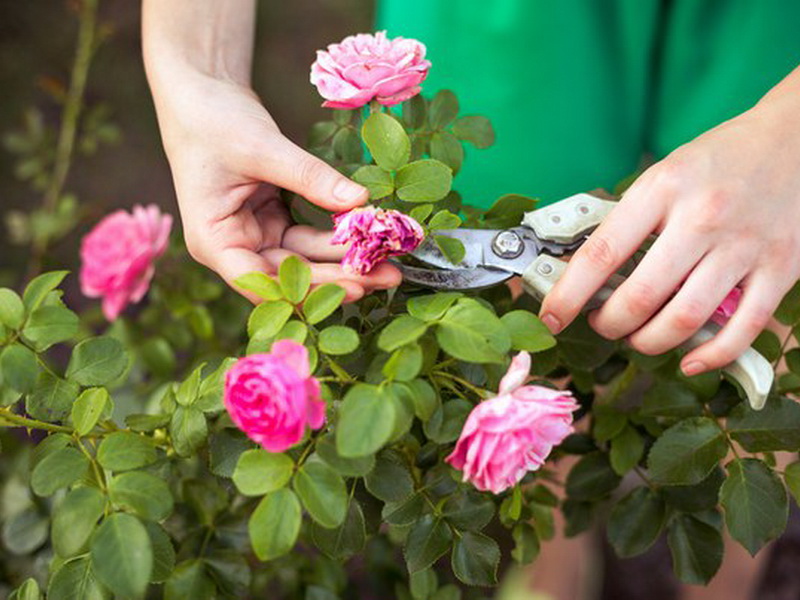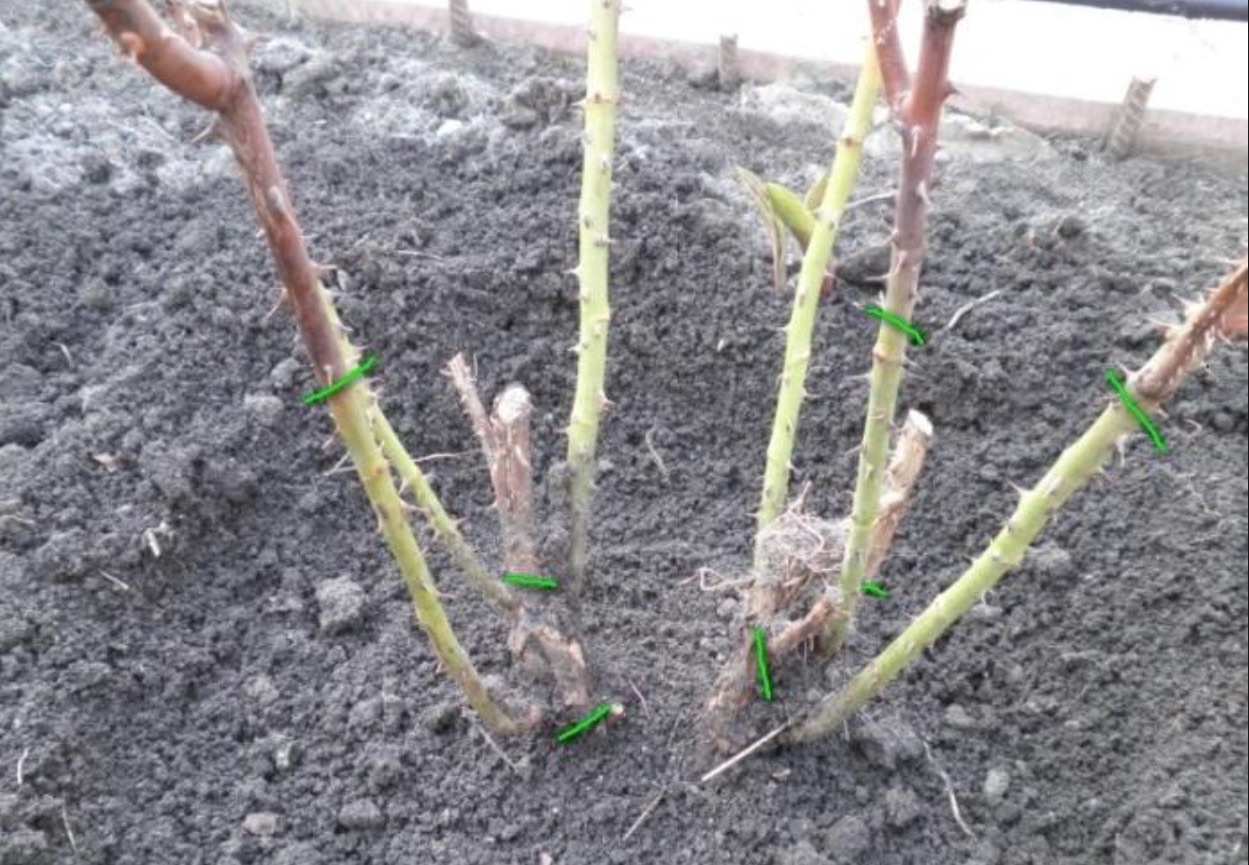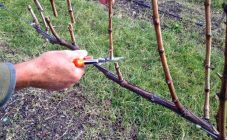Content:
Pruning is an integral part of caring for roses in the garden or at home. This procedure is carried out to achieve many goals aimed at rejuvenating the plant, enhancing its flowering and protecting against various diseases. Pruning in the summer has a high decorative potential, which is practiced relatively rarely.
General rules for caring for roses for beginners
Once the bushes have been planted, they should be watered regularly as they respond positively to moisture. However, an excess of liquid is also dangerous for plants. Top dressing is carried out once a month, carefully observing the dosage and trying not to exceed it. In order to protect plantings from diseases and pests, both chemical preparations and folk remedies are used. From time to time, roses are pruned as needed.
Why prune roses
Plants that have not undergone the necessary pruning for a long time quickly lose their decorative properties. The upper part of the plants dies off after several years, and new shoots are formed from the buds growing in the lower part of the bushes. For wild roses, only minimal pruning is important, as a result of which they get rid of old and dried stems, which allows the plants to look neat. The reasons for full pruning of varietal bushes are more varied:
- pruning for rejuvenation extends the life of plants. If the branches are not removed for three years, they become ugly and spoil the appearance of the plants, and subsequently dry out;
- full bloom and buds of sufficient size can be obtained only with sufficient nutrition. To provide it, it is necessary to timely get rid of thinned, weakened, old stems, as well as those that grow inside the crown and thicken it. All these shoots are useless and even harmful from a decorative point of view, and they also increase the risk of developing fungal diseases, and at the same time consume a significant part of the nutrients. All stems, which are thinner than a pencil in diameter, are also subjected to removal, since they will not have time to grow normally before winter and will die. It is this pruning that is the answer to the frequent question of flower growers about how to prune roses in August;
- normalizing the number of stems will allow you to get large beautiful flowers;
- it is necessary to cut the stems that have suffered from diseases. This will prevent harmful infections from spreading further along the plant;
- pruning bushes in spring or autumn stimulates the development and growth of new, more powerful and strong stems;
- the culture in question has a high shoot-forming ability and a powerful root system. The combination of a balance between these two systems will allow you to get a beautiful ornamental plant, while in its absence, only young thin or drying old shoots will be present on the flowers.
Do I need to cut roses in summer
During this period, its main goal is the need to re-bloom roses after a certain period of time. First of all, this applies to large-flowered and standard varieties. It should be noted that there are varieties of roses that can bloom only once per season, and pruning is not able to change this property. This category includes, for example, individual climbing roses, the buds of which are formed on the shoots of the last year. However, there are very few such varieties, and most of the most common varieties (Floribunda, David Austin, etc.) do not apply to them. In order for the plants to bloom again, it is necessary to cut the stems low, which will accelerate the accelerated formation of new shoots. For those roses that bloom once a season, only the flowers are removed.
In some cases, there is a lack of flowering of plants under normal cultivation conditions. The reason for this is the so-called. blind escape. At the top of such stems there are scars of a darkish color or an underdeveloped bud, when the top of full-fledged shoots is crowned with this year's growth or a bud. Such a defect in the spring can be triggered by late frosts, and in the summer it can be affected by metabolic disorders or fungal diseases. To get rid of this disadvantage, the apical bud should be removed by capturing part of the normal stem with the leaf.
With regular visual examination, it is possible to quickly determine the initial symptoms of ailments and carry out the necessary treatment. At this stage, it is very effective to remove the affected areas of plants with the capture of a small part of healthy plant tissue. If this procedure is not carried out, the disease will spread further and destroy the plant if no chemical remedies are applied.
Perennial plantings require regular anti-aging pruning. First of all, this need is manifested in bush roses. Typically this is done in the fall, but this time of year is usually wet. In view of this, open stem sections become available for various infectious diseases. With summer pruning, the cuts dry out relatively quickly. The procedure is carried out shortly after flowering, in dry weather. The thickened stems located in the lower part of the plant and characterized by a dark-colored bark are subject to removal.
Summer pruning is especially important for grafted plants. In such roses, multiple wilds often begin to grow below the grafting site. This process is especially strong and poorly controlled after severe cold winters. If this new growth is not removed in time, it can absorb all the nutrients, as a result of which the varietal rose will die.
Often there is a situation when in cold winters varietal plants freeze out, and in spring shoots begin to grow from the roots. Before pruning it, you should make sure that it is a real growth from the wild and not from the variety. In cultivated roses, the leaf usually consists of 5 leaves, and in wild roses - of 7. However, some varieties also have 7 leaves, so you need to pay attention to the color of the foliage. In wild plants, the leaves are pale, incomplete and smallish, they lack the glossy sheen characteristic of varietal plants. Reddish bloom on the leaves and young stems on the bush is also not observed in wild birds.
The process of pruning roses
For pruning roses, choose a dry, warm day. A pre-disinfected knife or pruner is used as tools, and if there are shoots more than 2 cm in thickness, a garden saw is used. Pruning is carried out immediately after the first flowering, about 8 mm above the eyes - the outer growth buds. These buds are primordial, located in the axils of the leaves and are clearly visible after the foliage has fallen off. This allows not only to stimulate additional flowering, but also to accelerate the growth of shoots.
On roses, instead of pruning, it is often practiced to remove a flower that has stopped flowering by pinching the peduncle, by analogy with tulips or daffodils. This should not be done, since this procedure greatly weakens the escape. After pinching, it begins to stretch in length, becomes very brittle. Flowers on such shoots quickly fall off.
When pruned incorrectly, the plant often dies. If the cut was made above the kidney, then the stem soon dries up and dies, and if it is below the kidney, it runs the risk of injury and infectious disease. A cut with an incorrect slope often causes the accumulation of moisture in the kidney and its subsequent death. For disinfection, a fresh cut is thickly covered with garden var.
Summer pruning of climbing roses usually involves the removal of old shoots to the base, followed by the obligatory incorporation of garden pitch. Among the young stems, only the most powerful and tall are left, which will serve as the basis for flowers in the next season. If such shoots are not enough, then the old stems are not completely removed, but to a level of 30-40 cm. Most often, the climbing rose is trimmed in July.
Do I need to cut roses during flowering
Pruning roses during flowering is usually not done. This drastically reduces the decorative appearance of plants. It is best to wait for the roses to complete their flowering phase.
Knowing how to properly cut roses from a bush in the summer, and knowing how to apply the knowledge gained in practice, you can easily increase the decorative effect of roses growing on the site. A simple and short-term procedure allows shrubs to form correctly, making them more beautiful and healthy.















